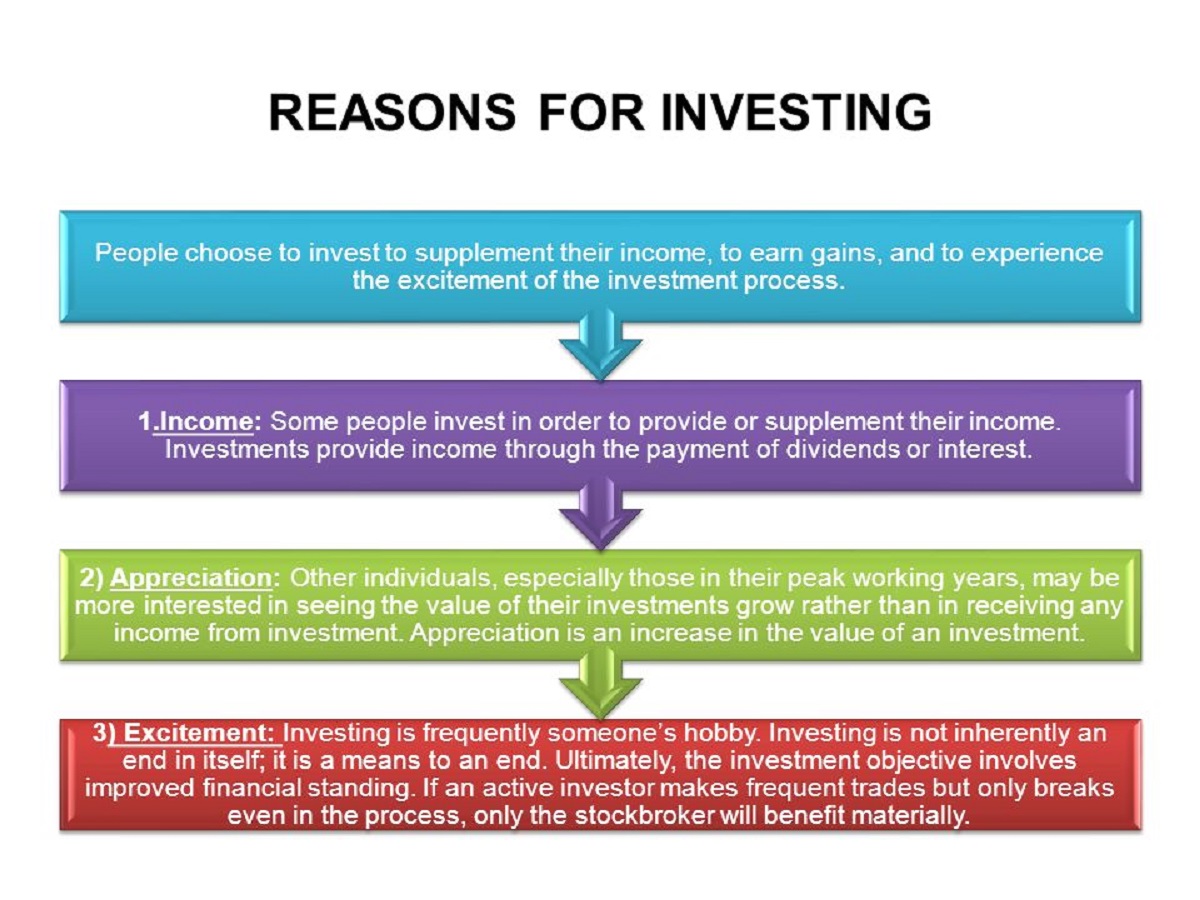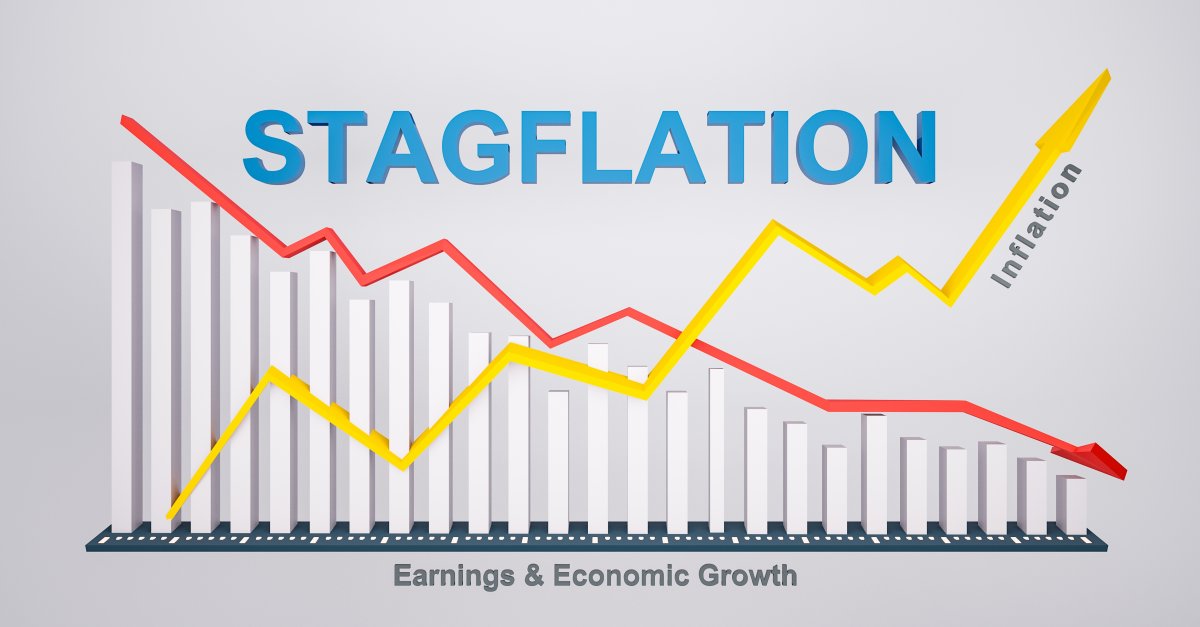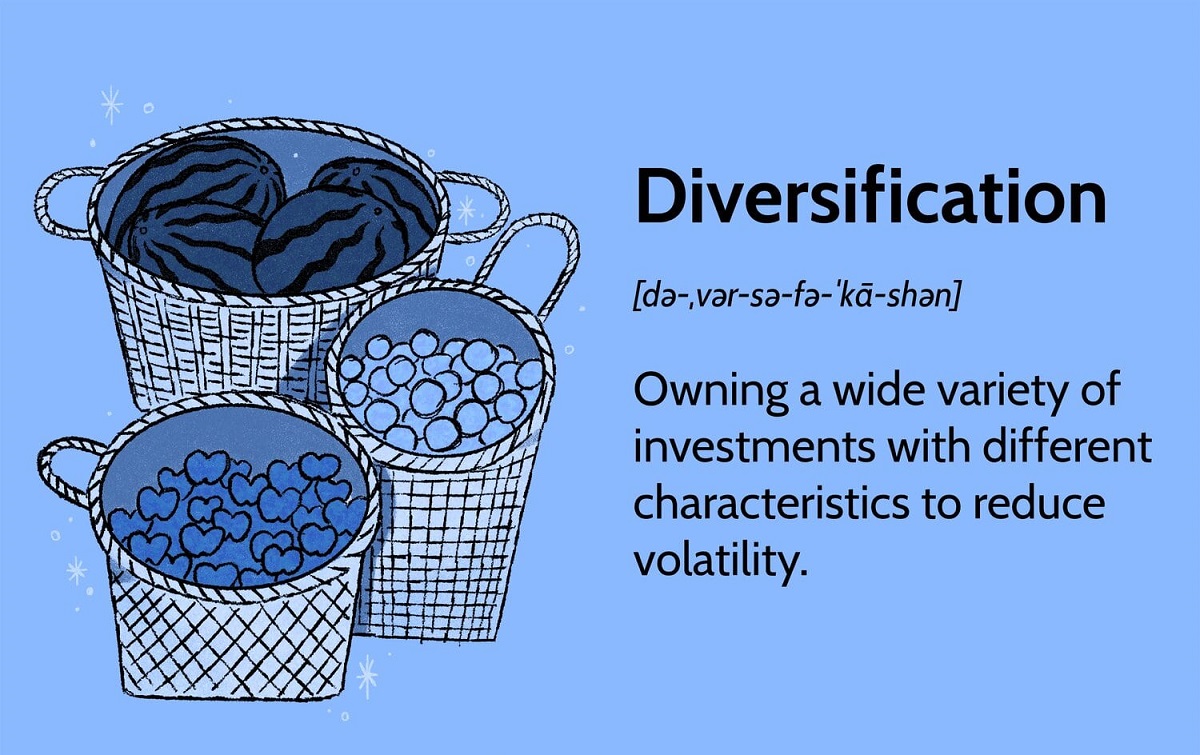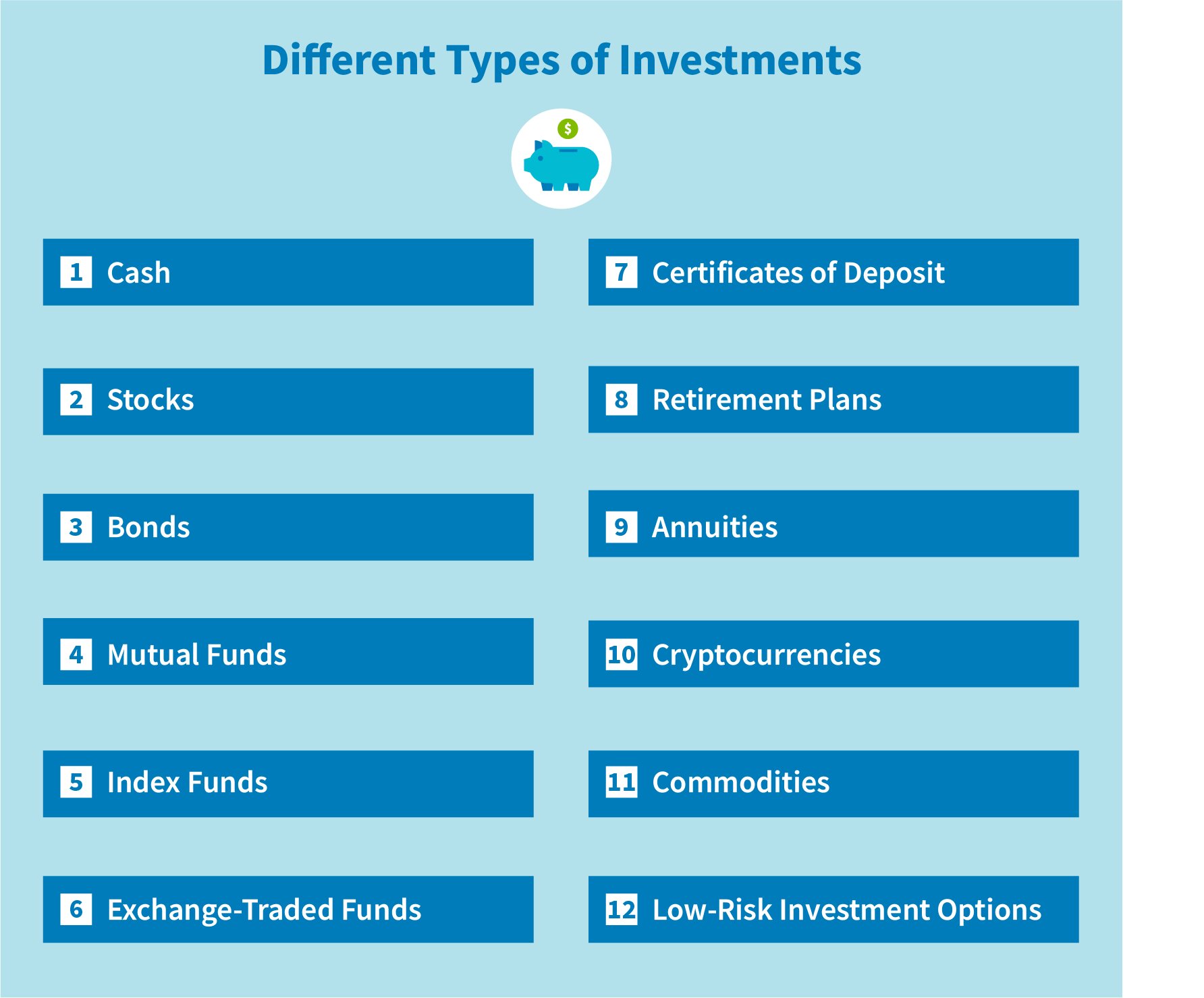Introduction
When it comes to investing, it’s natural to desire high returns and substantial wealth accumulation. However, the pursuit of significant gains often involves taking on substantial risks. For those who prioritize the preservation of capital and seek a more conservative approach, low risk investments offer a compelling option.
Low risk investments are financial instruments that tend to provide a stable and predictable rate of return over time. While the potential for significant wealth growth may be lower compared to high-risk investments, low risk investments offer peace of mind and a smoother path towards financial security.
In this article, we will explore the different types of low risk investments, their unique characteristics, and how they contribute to generating investment income and wealth. By understanding the benefits and considerations of low risk investments, individuals can make informed decisions to secure their financial future.
It is important to note that while low risk investments provide a certain level of stability, no investment is entirely without risk. It is always advisable to conduct thorough research and consult with a financial advisor before making any investment decisions.
Definition of Low Risk Investments
Before delving into the specifics of low risk investments, it’s crucial to understand what exactly defines them in the investment landscape. Low risk investments are financial instruments that have a minimal chance of losing the initial capital invested. These investments prioritize the preservation of capital rather than aiming for high returns.
Unlike high-risk investments such as stocks or cryptocurrencies, low risk investments typically offer a more modest rate of return. However, they compensate for this by providing stability and reducing the potential for significant losses. This makes them an attractive option for investors who value security and want to avoid the volatility associated with riskier assets.
Low risk investments are often characterized by predictable and consistent income streams. They are generally associated with low fluctuations in value and offer a higher level of certainty compared to riskier investment options.
Furthermore, low risk investments are commonly associated with longer-term horizons. They are ideal for individuals with a more conservative investment approach or those nearing retirement who prioritize wealth preservation over aggressive growth.
It’s important to note that the level of risk varies across different types of investments. While certain investments such as certificates of deposit (CDs) or government bonds are considered extremely low risk, others, like corporate bonds or real estate investment trusts (REITs), carry slightly higher risks but still fall within the category of low risk investments.
Overall, the defining characteristic of low risk investments is the emphasis on minimizing the potential for loss, offering stability, and providing a reliable source of income over time.
Types of Low Risk Investments
There are various types of low risk investments available for investors seeking stability and preservation of capital. These investment options offer different features and potential returns. Let’s explore some of the most common types:
- Certificates of Deposit (CDs): CDs are time deposits offered by banks with fixed interest rates and maturity dates. They are considered one of the safest low risk investment options as they are FDIC-insured and offer guaranteed returns. CDs are ideal for individuals who have a specific time frame for their investment and don’t need immediate access to their funds.
- Treasury Bonds: Treasury bonds are issued by governments to fund their operations. These bonds offer a fixed interest rate and mature over a longer time horizon, typically ranging from 10 to 30 years. Treasury bonds are considered very low risk as they are backed by the government’s ability to repay the debt.
- Money Market Funds: Money market funds invest in highly liquid and low-risk securities such as government bonds, certificates of deposit, and short-term corporate debt. These funds provide investors with a stable rate of return and are known for their low volatility. Money market funds are suitable for individuals who want easy access to their funds while maintaining low risk.
- Fixed Annuities: Fixed annuities are insurance-based contracts that provide a guaranteed income stream for a specific period or throughout the lifetime of the individual. They offer a fixed interest rate and are considered low risk due to the insurance company’s backing. Fixed annuities are suitable for individuals looking for a reliable income stream during retirement.
- High-Yield Savings Accounts: High-yield savings accounts are offered by banks and credit unions, providing a higher interest rate compared to standard savings accounts. These accounts are FDIC-insured and offer a safe and accessible way to earn interest on savings while maintaining liquidity.
- Corporate Bonds: Corporate bonds are debt securities issued by companies to finance their operations or expansion. Investment-grade corporate bonds are considered low risk and offer regular interest payments. However, it’s important to conduct thorough research on the financial health of the issuing company before investing in corporate bonds.
These are just a few examples of low risk investments available to investors. It’s crucial to carefully evaluate the features, risks, and potential returns of each investment option before making a decision. Diversifying across different low risk investments can help further mitigate risk and maximize the potential for steady returns.
Characteristics of Low Risk Investments
Low risk investments possess specific characteristics that set them apart from higher risk investment options. Understanding these characteristics can help individuals make informed decisions and align their investment strategies with their financial goals. Here are some key characteristics of low risk investments:
- Stability: Low risk investments are known for their stability. They typically experience minimal fluctuations in value and provide a more predictable rate of return. This stability is particularly beneficial for investors who prioritize capital preservation and seek to avoid significant losses.
- Predictable Income: Low risk investments often generate a steady and predictable income stream. Whether it’s interest payments from certificates of deposit or coupon payments from bonds, investors can rely on a consistent source of income that helps build financial security over time.
- Lower Volatility: Compared to higher risk investments, low risk investments tend to exhibit lower volatility. This means that they are less susceptible to abrupt price changes, reducing the likelihood of sudden and substantial losses. This stability can provide investors with peace of mind, especially during turbulent market conditions.
- Lower Potential Returns: While low risk investments offer stability and predictability, they typically provide lower potential returns compared to riskier assets. Investors must balance their desire for higher returns with their tolerance for risk and consider their long-term financial goals when choosing low risk investments.
- Protection of Initial Investment: One of the key attractions of low risk investments is the protection of the initial capital invested. Unlike riskier investments that may experience significant losses, low risk investments prioritize capital preservation, ensuring that investors have a higher chance of getting their money back.
- Liquidity: Many low risk investments offer a level of liquidity, allowing investors to access their funds when needed. While some investments may have specific maturity dates or withdrawal penalties, others such as high-yield savings accounts or money market funds provide the flexibility to withdraw funds without major restrictions.
It’s important to recognize that even though low risk investments offer stability and protection, no investment is entirely without risk. Economic changes, inflation, or other unforeseen events can impact the performance of these investments. Conducting thorough research, diversifying investments, and seeking professional advice can help individuals navigate the investment landscape and optimize their low risk investment strategies.
Low Risk Investments and Investment Income
Low risk investments play a crucial role in generating investment income for individuals seeking a steady and reliable source of earnings. These investments offer various avenues for generating income while prioritizing the preservation of capital. Let’s explore how low risk investments contribute to investment income:
Interest Income: Many low risk investments, such as certificates of deposit, treasury bonds, and high-yield savings accounts, provide interest income. Investors receive a fixed or variable interest rate on their capital, which adds to their investment income. This interest income can be reinvested or used as a regular income stream to cover expenses.
Coupon Payments: Bonds, including corporate bonds and government bonds, offer regular coupon payments to bondholders. These fixed payments represent the interest earned on the bond and provide investors with a predictable income stream. Coupon payments can be reinvested or utilized as a source of passive income.
Dividend Payments: Some low risk investments, such as certain dividend-paying stocks or preferred shares, offer dividend payments to shareholders. These payments represent a portion of the company’s profits and serve as a source of investment income. Dividends can be reinvested or used as a means to supplement one’s regular income.
Rental Income: Real estate investment trusts (REITs) are low risk investments that allow individuals to invest in real estate without the hassle of property management. REITs generate income through rental properties or mortgage interest. Investors in REITs receive regular distributions, often in the form of dividends, which contribute to their investment income.
Annuity Payments: Fixed annuities, a type of low risk investment, provide individuals with a guaranteed income stream for a specific period or throughout their lifetime. Annuity payments offer a reliable source of investment income, making them popular among retirees or individuals seeking long-term financial security.
By diversifying their low risk investment portfolio and incorporating various income-generating assets, individuals can create a well-rounded investment income strategy. However, it’s essential to consider the tax implications, liquidity, and specific characteristics of each investment before making decisions related to investment income.
Low Risk Investments and Wealth Generation
While low risk investments may not offer the same potential for rapid wealth accumulation as high-risk investments, they play a crucial role in long-term wealth generation and financial stability. By prioritizing capital preservation and providing consistent returns, low risk investments contribute to the growth of wealth in the following ways:
Compounding Returns: Low risk investments enable individuals to capitalize on the power of compounding returns. By reinvesting the regular income generated from these investments, investors can benefit from the compounding effect over time. This means that not only is the original investment growing, but the income generated by the investment is also reinvested and generates additional income, accelerating the wealth-building process.
Reduced Market Volatility Risk: Low risk investments are less susceptible to market volatility, making them a valuable component of a diversified portfolio. While riskier assets may experience significant ups and downs, low risk investments can act as a stabilizing force, minimizing the impact of market fluctuations on overall wealth. This reduced volatility risk provides a sense of security and long-term wealth sustainability.
Wealth Preservation: The preservation of capital is a crucial aspect of wealth generation. Low risk investments aim to protect the initial investment and generate stable returns. By minimizing the risk of loss, investors can preserve their wealth and ensure a solid foundation for future growth. This preservation of capital allows individuals to have a secure financial base from which they can explore other investment opportunities or pursue lifestyle goals.
Risk Management: Including low risk investments in a well-diversified investment portfolio allows for effective risk management. By spreading investments across different asset classes with varying risk levels, investors can mitigate potential losses and optimize their risk-adjusted returns. Low risk investments act as a safety net, protecting wealth during periods of market turbulence and providing a more stable foundation for overall wealth generation.
Long-Term Financial Planning: Low risk investments are especially beneficial for individuals with long-term financial goals, such as retirement planning or funding future expenses. The predictable income generated by these investments allows individuals to plan ahead, budget effectively, and ensure a consistent flow of funds to support their financial objectives. By incorporating low risk investments into a comprehensive long-term financial plan, investors can build wealth steadily and sustainably over time.
It’s important to note that while low risk investments are valuable for wealth generation, they should be complemented by other investment strategies depending on an individual’s risk tolerance and financial goals. Maintaining a balanced and diversified portfolio is key to maximizing wealth generation and managing risk effectively.
Examples of Low Risk Investments
There are several examples of low risk investments that individuals can consider when seeking stability, preservation of capital, and reliable returns. Here are some common examples of low risk investments:
- Certificates of Deposit (CDs): CDs are time deposits offered by banks and credit unions. They have fixed interest rates and maturity dates, making them a popular choice for risk-averse investors looking for guaranteed returns.
- Treasury Bonds: Treasury bonds are issued by governments to raise capital and finance operations. Backed by the full faith and credit of the government, these bonds offer fixed interest rates and are considered one of the safest low risk investments.
- Money Market Funds: Money market funds invest in low-risk and highly liquid securities. They are designed to maintain a stable net asset value (NAV) of $1 per share, making them a low risk and easily accessible investment option for individuals.
- Dividend-Paying Stocks: Certain blue-chip stocks are known for their stable dividends. These stocks belong to well-established companies with a history of consistent dividend payments, making them attractive low risk investments for income-oriented investors.
- High-Yield Savings Accounts: High-yield savings accounts are offered by banks and credit unions, providing a higher interest rate than standard savings accounts. They offer a safe and accessible way to earn interest on savings, making them a popular low risk investment choice.
- Fixed Annuities: Fixed annuities are insurance-based contracts that provide a guaranteed income stream for a specific period or throughout an individual’s lifetime. These annuities offer a fixed interest rate and are considered low risk due to the backing of the insurance company.
- Government Bond Funds: Government bond funds invest in a diversified portfolio of government bonds. These funds provide investors with exposure to low risk securities while offering potential diversification benefits.
It’s important to note that the specific characteristics, returns, and risks associated with these investments can vary. Individuals should thoroughly research and evaluate each investment option, considering factors such as liquidity, maturity dates, fees, and taxation implications before making investment decisions. Diversifying across different low risk investments can also enhance a portfolio’s stability and potential for steady returns.
Conclusion
Low risk investments offer a valuable opportunity for individuals to achieve financial stability, preserve capital, and generate consistent returns. While they may not provide the same level of potential growth as higher risk investments, low risk options play a crucial role in long-term wealth generation and investment income.
By diversifying their portfolios and incorporating various low risk investments such as CDs, treasury bonds, money market funds, and dividend-paying stocks, individuals can strike a balance between stability and potential returns. These investments provide stability, predictable income streams, and protection of the initial capital invested.
Low risk investments also serve as an essential component of risk management and long-term financial planning. They offer a buffer against market volatility, ensure preservation of wealth, and contribute to a solid foundation for wealth generation.
However, it’s important to recognize that no investment is entirely risk-free, and individuals should thoroughly research and consider their own financial goals, risk tolerance, and time horizon before making investment decisions. Consulting with a financial advisor can provide valuable insights and guidance in creating a well-rounded investment strategy.
By incorporating low risk investments into their portfolio, investors can achieve a balance between stability and growth, helping them navigate the investment landscape with confidence and work towards their long-term financial objectives.

























